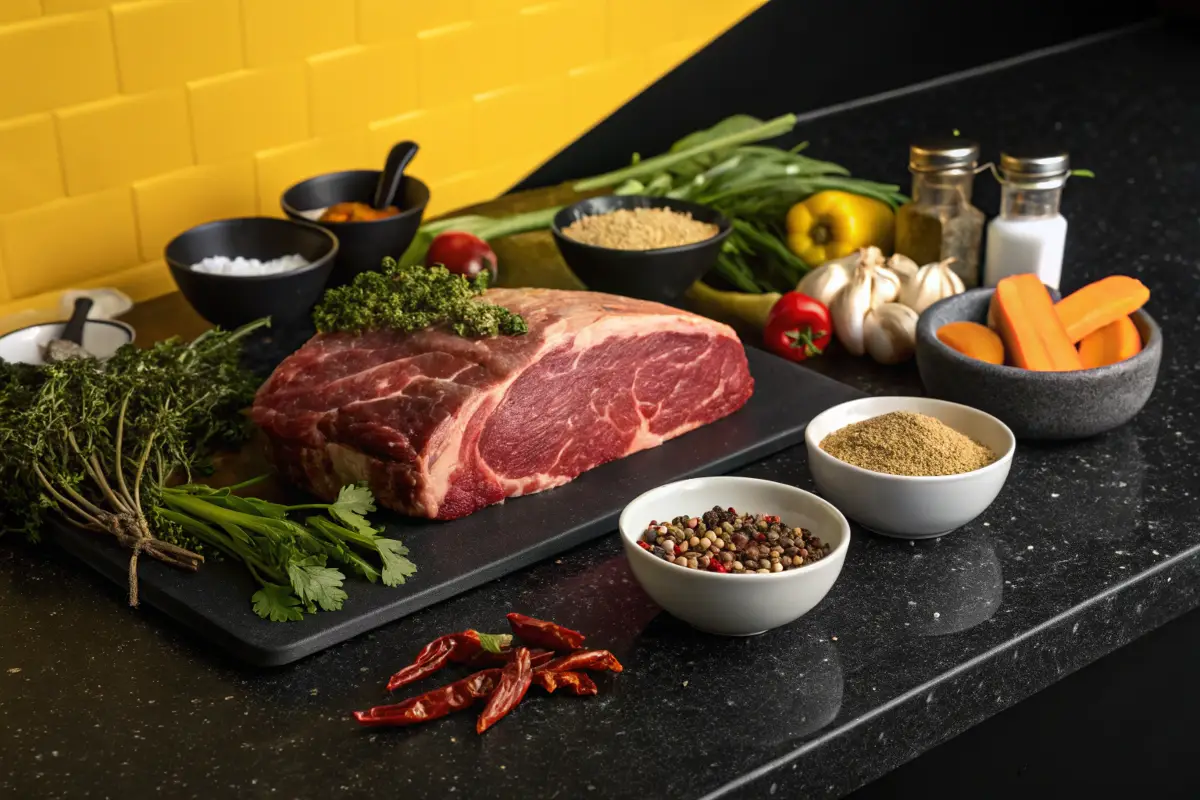Introduction : Arm Roast Recipes
If you’re searching for a hearty and flavorful meal, then an arm roast is the perfect choice. This cut of beef is not only budget-friendly but also versatile. It’s a great option for family dinners or special occasions. Whether you’re slow-cooking it for tender perfection or roasting it in the oven, the arm roast delivers every time. Its rich flavor and melt-in-your-mouth texture make it one of the most satisfying cuts for beef lovers.
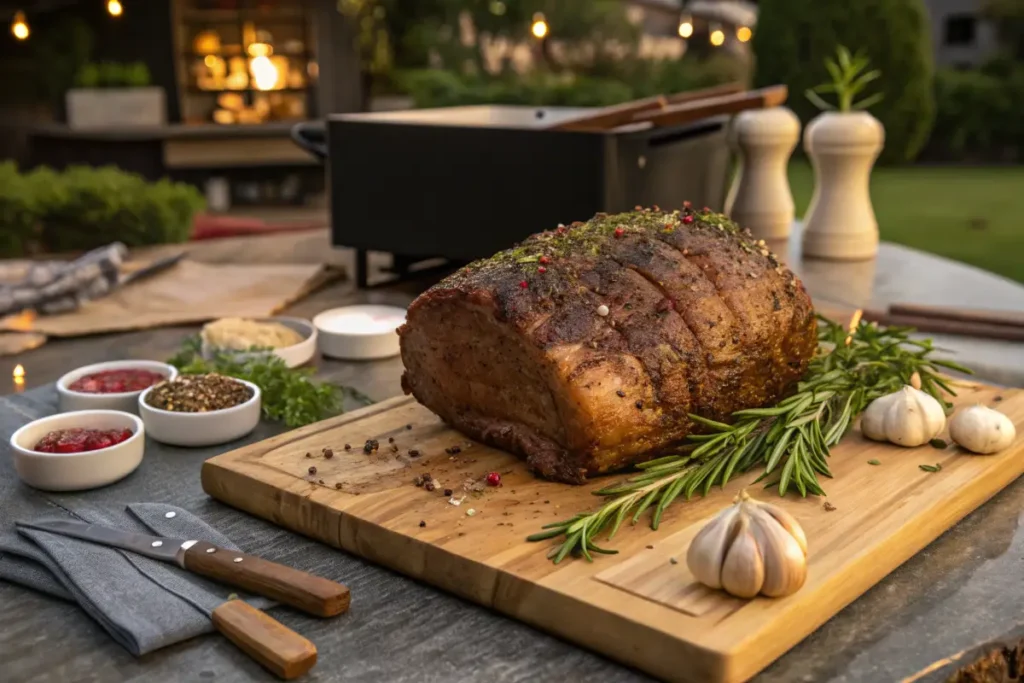
Table of contents
- Introduction : Arm Roast Recipes
- Ingredients for the Perfect Arm Roast Recipe
- Preparation for the Perfect Arm Roast Recipe
- 5 Ways to Cook Arm Roast to Perfection
- Serving Suggestions to Elevate Your Arm Roast
- Creative Variations for Arm Roast Recipes
- Nutritional Analysis of Arm Roast
- FAQs About Arm Roast and Related Cuts
- Conclusion of How to cook arm roast
What Makes Arm Roast a Great Choice?
There are countless ways to prepare an arm roast, which is why it’s such a popular choice among home cooks. For example, you can try a classic beef arm pot roast with tender root vegetables. Alternatively, you can make a wine-braised roast bursting with bold flavors. Oven-roasting also creates a crispy exterior while keeping the meat juicy and tender on the inside. Regardless of the cooking method, the arm roast guarantees a comforting and flavorful meal.
But why choose an arm roast over other beef cuts? First, it’s affordable without compromising on quality or taste. Its natural marbling ensures a tender, juicy texture, even with long cooking times. Additionally, it’s incredibly easy to cook, making it perfect for beginners and seasoned chefs alike. If you’ve wondered how to cook an arm roast, this guide will show you exactly how to get started.
What You’ll Learn in This Guide
In this article, you’ll discover five incredible ways to cook an arm roast to perfection. Each recipe is designed to bring out the best flavors and textures of this underrated cut. You’ll also find helpful tips for enhancing your recipes with simple ingredients. Whether you’re hosting a holiday dinner or preparing a cozy weeknight meal, these ideas will help you shine in the kitchen.
Get ready to transform your dinner table with these mouthwatering arm roast recipes. These easy, foolproof techniques will leave everyone asking for seconds!
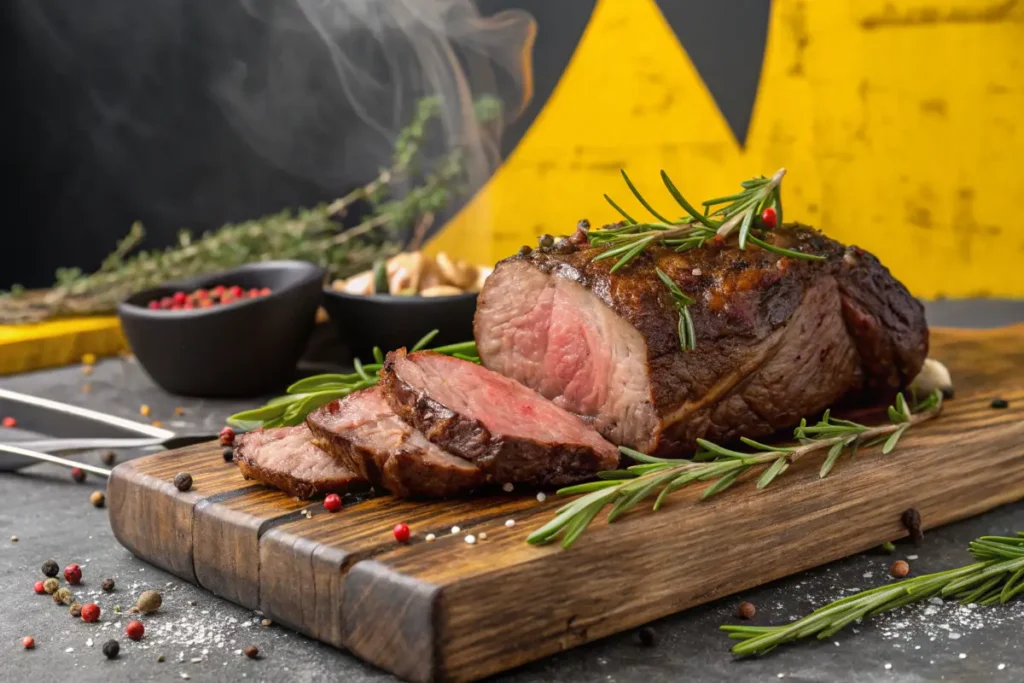
Ingredients for the Perfect Arm Roast Recipe
When preparing an arm roast, selecting the right ingredients is key to achieving a flavorful and tender dish. Below, you’ll find a detailed breakdown of ingredients, organized by categories, along with substitutions and tips to suit various dietary needs.
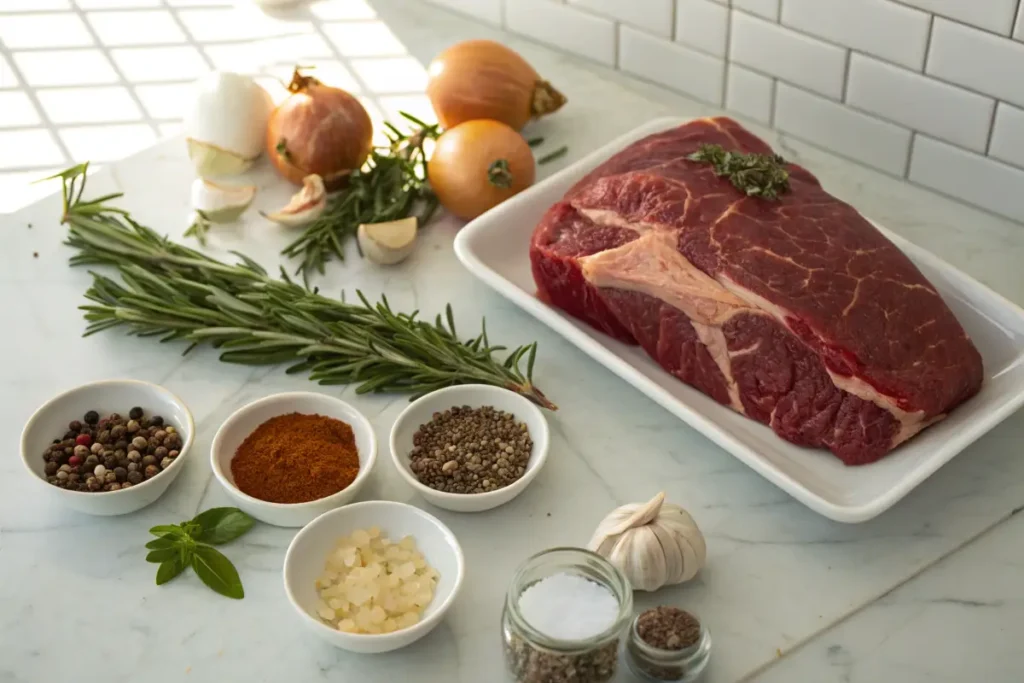
Main Ingredients
- Arm Roast (3-4 pounds)
- This is the star of the dish. Look for a well-marbled cut to ensure tenderness and juiciness.
- Substitution: If you can’t find an arm roast, you can use a chuck roast, which has a similar texture and flavor.
- Beef Broth (2-3 cups)
- Adds moisture and enhances the savory flavor of the roast. Use low-sodium broth to control salt levels.
- Substitution: Chicken broth or vegetable stock can work in a pinch but may alter the flavor slightly.
- Yellow Onion (1 large, sliced)
- Provides a subtle sweetness and depth of flavor when cooked.
- Substitution: Shallots or red onions can be used for a slightly different flavor profile.
- Carrots (2-3 large, peeled and cut into chunks)
- Add natural sweetness and pair well with the beef.
- Substitution: Parsnips or sweet potatoes can be used as an alternative for a twist on the classic recipe.
- Potatoes (3-4 medium, quartered)
- Act as the hearty base for the dish. Yukon Gold or red potatoes are great options for their creamy texture.
- Substitution: For a low-carb option, use turnips or cauliflower florets.
- Garlic (4-5 cloves, minced)
- Enhances the overall flavor with its aromatic and savory qualities.
- Substitution: Garlic powder can be used if fresh garlic is unavailable, though fresh is always preferred.
Seasonings and Spices
- Salt and Black Pepper (to taste)
- Essential for seasoning the roast and bringing out the natural flavors of the beef.
- Dried Herbs (1 teaspoon each of rosemary and thyme)
- These herbs complement the beef and add an earthy aroma to the dish.
- Substitution: Use Italian seasoning or fresh herbs for a more vibrant flavor.
- Paprika (1 teaspoon)
- Adds a mild smokiness and enhances the overall color of the roast.
- Substitution: Smoked paprika or chili powder can add a bolder flavor.
Liquid Additions
- Red Wine (½ cup, optional)
- Adds richness and depth to the dish. Use a dry red wine like Cabernet Sauvignon or Merlot.
- Substitution: If avoiding alcohol, use extra beef broth or pomegranate juice for a similar depth.
- Worcestershire Sauce (1-2 tablespoons)
- Enhances the umami flavor and complements the beef.
- Substitution: Soy sauce or tamari can be used as a gluten-free alternative.
Optional Additions
- Celery (2 stalks, chopped)
- Adds an additional layer of texture and flavor.
- Substitution: Fennel stalks can be used for a slightly sweeter taste.
- Bay Leaves (1-2)
- Infuse the broth with a subtle herbal flavor. Remove before serving.
- Tomato Paste (1 tablespoon)
- Adds a touch of acidity and depth to the sauce.
- Substitution: A splash of canned tomato sauce can also work well.
Ingredient Tips for Dietary Preferences
- Gluten-Free Option: Ensure your beef broth and Worcestershire sauce are labeled gluten-free.
- Low-Sodium Option: Use unsalted beef broth and reduce the amount of added salt in the recipe.
- Vegan Option: Swap the beef for jackfruit or a plant-based meat alternative, and use vegetable broth instead of beef stock.
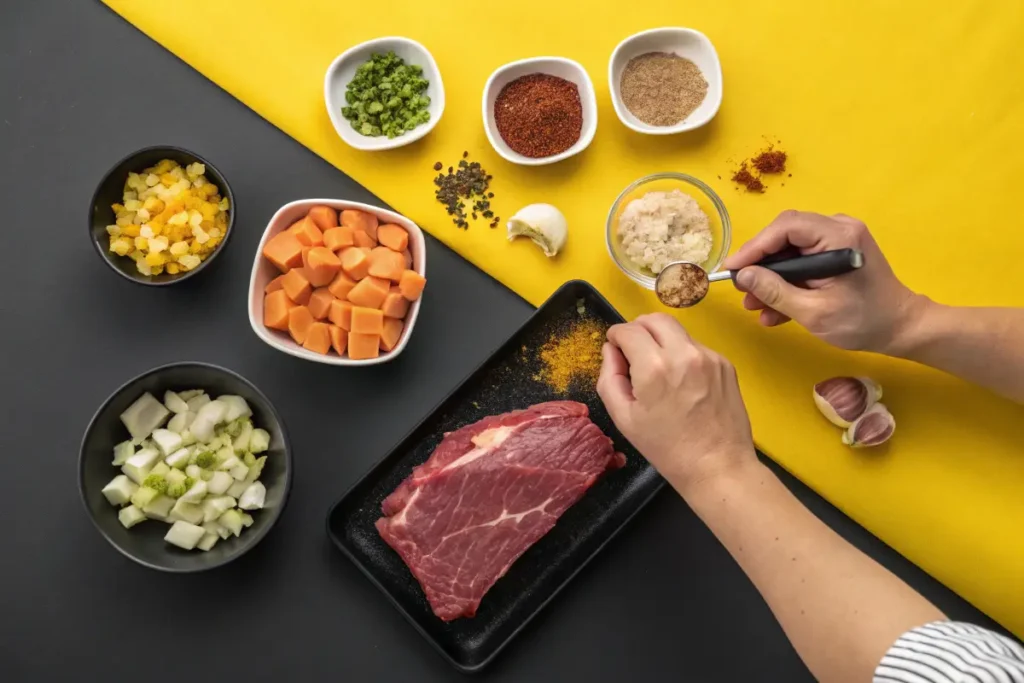
Preparation for the Perfect Arm Roast Recipe
Preparing an arm roast is a straightforward process, but using the right steps can make all the difference. By following this guide, you’ll ensure every bite is tender, flavorful, and cooked to perfection. Whether you’re using a slow cooker or roasting in the oven, taking time to prepare properly is essential. Let’s dive into the detailed steps!
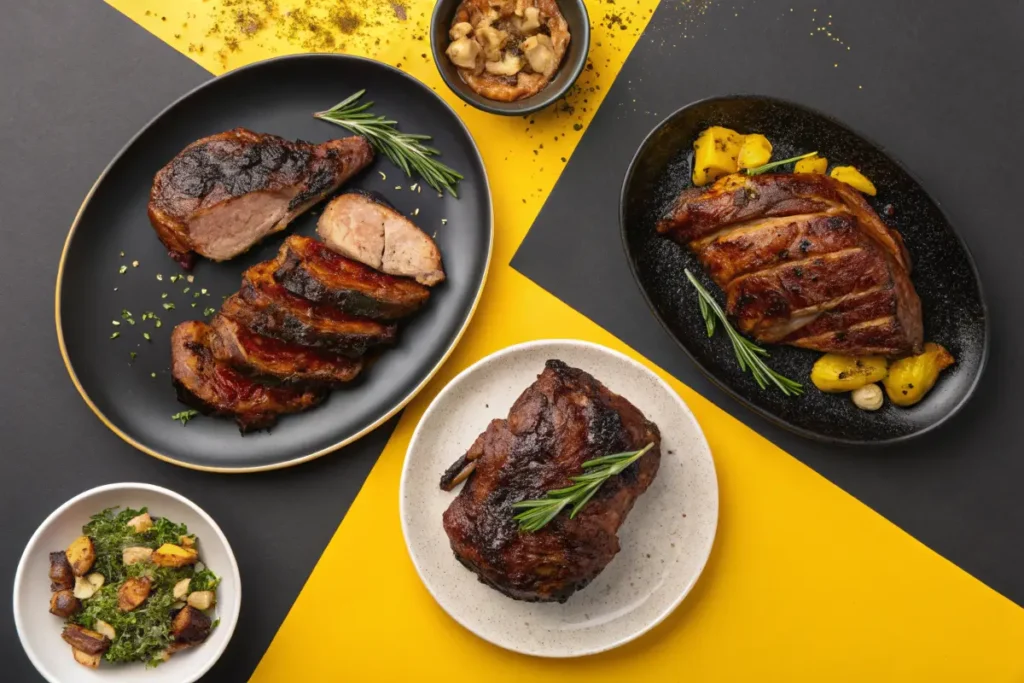
Gather and Prep the Ingredients
To begin, make sure all of your ingredients are ready before you start cooking. First, take the arm roast out of the fridge and let it come to room temperature for 20-30 minutes. This step is crucial because it ensures even cooking. Meanwhile, season the roast generously with salt, black pepper, rosemary, and thyme. Be sure to coat the roast evenly, as this will enhance the overall flavor.
While the roast rests, prepare your vegetables. Chop the carrots, potatoes, onions, and celery into uniform pieces, because this helps them cook evenly. In addition, peel and mince the garlic, and measure out the beef broth, red wine, and Worcestershire sauce. Taking these steps ahead of time saves you from scrambling while cooking. After all, being organized makes the entire process much smoother.
Sear the Roast for Extra Flavor
Next, heat a large skillet or Dutch oven over medium-high heat, because searing the roast is essential for building flavor. Once the pan is hot, add olive oil and wait until it begins to shimmer. Carefully place the arm roast into the pan and let it sear on one side for 2-3 minutes. Then, turn the roast and repeat on all sides until you achieve a deep golden-brown crust. This step locks in the juices and adds a rich, savory depth to the roast.
After searing the roast, transfer it to a plate and set it aside temporarily. While the pan is still hot, add the onions, celery, and garlic. Sauté the vegetables for 2-3 minutes to release their flavors. At the same time, scrape up any browned bits stuck to the bottom of the pan. These bits, called fond, are packed with flavor and will elevate the dish.
Deglaze the Pan for a Flavorful Base
Once the aromatics are softened, it’s time to deglaze the pan. Pour in the red wine (or beef broth if not using wine) and stir immediately. Use a wooden spoon to scrape the bottom of the pan, because the browned bits are full of flavor. Stir for about 2 minutes until the liquid reduces slightly. Then, add the tomato paste, because it creates a rich and savory foundation for the dish.
This step is important because it enhances the flavor of the arm roast and prevents the meat from drying out during cooking. Don’t rush this part, as a properly deglazed pan makes all the difference in the final dish.
Assemble the Roast and Vegetables
Now, it’s time to assemble all the ingredients into your cooking vessel. If you’re using a slow cooker, transfer the seared arm roast to the pot first. Surround the roast with the chopped carrots, potatoes, and celery for even cooking. Next, pour the deglazed liquid and beef broth over the roast. Add Worcestershire sauce and bay leaves, because they boost the flavor even further.
On the other hand, if you’re using a Dutch oven, follow the same steps but keep it on the stovetop or move it to the oven later. It’s essential to ensure the liquid covers at least half of the roast, as this prevents it from drying out. At this point, your arm roast is ready to begin slow cooking.
Cook the Arm Roast to Perfection
Cooking the arm roast slowly is key to achieving tender, fall-apart meat. If you’re using a slow cooker, set it to low and cook for 6-8 hours. This method allows the meat to absorb all the flavors of the broth and vegetables. On the other hand, if you prefer oven roasting, preheat the oven to 300°F (150°C). Cover the Dutch oven with a lid and bake the roast for 3-4 hours.
While the roast cooks, check the liquid levels occasionally. If you notice the broth evaporating too quickly, add more to prevent the roast from drying out. By taking your time and cooking the roast at a low temperature, you’ll ensure a tender and juicy result.
Let It Rest Before Serving
Once the roast is fully cooked, it’s crucial to let it rest for 10-15 minutes before slicing. Resting allows the juices to redistribute throughout the meat, which keeps every bite moist and flavorful. While the arm roast rests, strain the pan drippings to make a gravy. Simmer the strained liquid on the stovetop and thicken it with a cornstarch slurry for a delicious finishing touch.
By taking this extra step, you’ll have a rich and savory sauce to serve alongside your perfectly cooked arm roast. Resting and preparing the gravy ensures the dish is as delicious as possible.
Tips for Perfect Results
- Don’t Skip the Searing Step: Searing the arm roast builds flavor and creates a beautiful crust.
- Monitor the Liquid Levels: Keep the broth or liquid level consistent to prevent drying out the roast.
- Cook Low and Slow: This method ensures tender, fall-apart meat that absorbs all the delicious flavors.
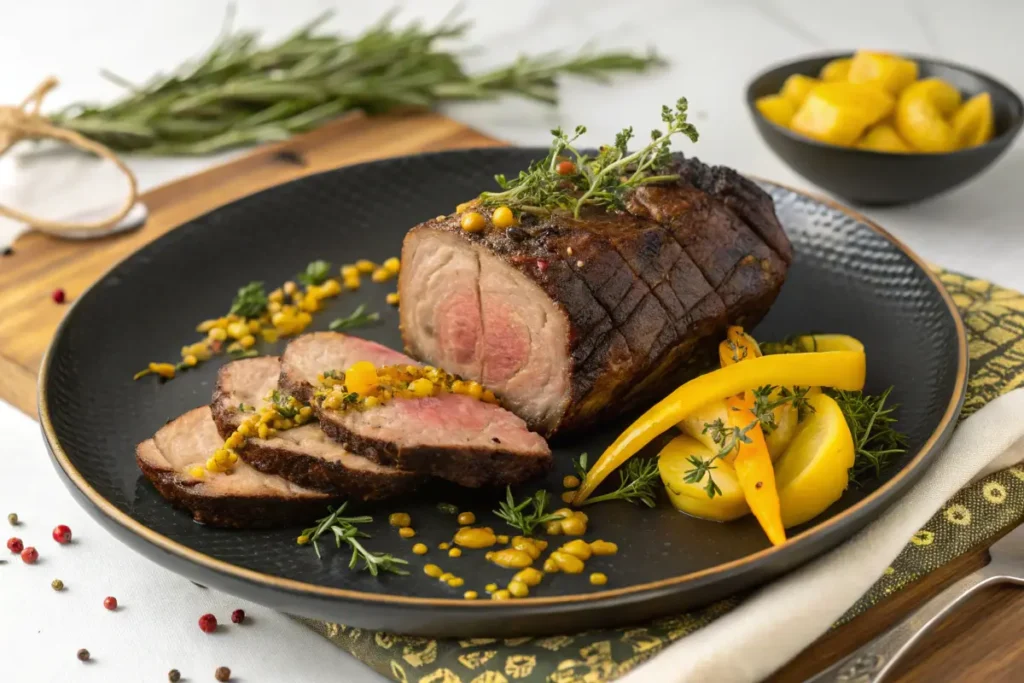
5 Ways to Cook Arm Roast to Perfection
Cooking an arm roast can be done in several ways, and each method brings out unique flavors and textures. Whether you prefer a slow-cooked approach or something quicker, there’s a technique for everyone. In this section, we’ll explore five tried-and-true methods to ensure your arm roast is cooked to perfection. These techniques work beautifully for beginners and experienced cooks alike.

Slow-Cooker Arm Roast
The slow cooker is one of the most popular methods for cooking an arm roast. First, it’s incredibly convenient because you can set it and forget it. The low, consistent heat of a slow cooker makes the beef incredibly tender while allowing the flavors to develop deeply.
To prepare a slow-cooker arm roast, start by searing the meat in a skillet to lock in flavor. Then, place the roast in the slow cooker, surround it with vegetables like carrots, potatoes, and onions, and pour in beef broth. Additionally, you can add Worcestershire sauce and a splash of red wine for extra depth. Finally, set the slow cooker to low and let it cook for 6-8 hours. The result is a tender, melt-in-your-mouth arm roast that’s bursting with flavor.
Oven-Roasted Arm Roast
If you love the taste of a golden, caramelized crust, then oven-roasting is the way to go. This method allows the arm roast to develop a beautiful crust while staying juicy inside. It’s perfect for those who enjoy a classic roast with a crisp exterior.
To begin, preheat your oven to 300°F (150°C). Next, season the arm roast generously with salt, pepper, and your favorite herbs, such as rosemary or thyme. After that, sear the roast in a hot skillet to lock in the juices. Once it’s browned, transfer it to a roasting pan with vegetables and broth. Cover the pan tightly with aluminum foil or a lid, because this helps the roast stay moist. Bake for 3-4 hours, checking occasionally to make sure there’s enough liquid. Oven-roasting creates a tender, flavorful dish that pairs perfectly with a side of gravy.
Braised Arm Roast
Braising is an excellent choice if you’re looking for a rich, flavorful dish that’s perfect for special occasions. This method combines searing and slow-cooking in a liquid base, resulting in a beef arm roast that’s incredibly tender and full of bold flavors.
Start by seasoning and searing the arm roast in a Dutch oven. Once it’s browned, remove the roast and sauté garlic, onions, and celery in the same pan. Then, deglaze the pot with red wine, scraping up all the browned bits for maximum flavor. Return the roast to the pot, pour in beef broth, and add herbs like bay leaves and thyme. Cover the pot and let it simmer on low heat for 2-3 hours, or place it in a 300°F oven for the same amount of time. By the time it’s done, the arm roast will be tender enough to pull apart with a fork.
Grilled This cut of beef
If you’re in the mood for smoky, charred flavors, grilling your arm roast is a fantastic option. Although it’s less common, grilling brings out a unique flavor profile that’s perfect for summer cookouts.
To grill an arm roast, start by marinating the meat for at least 4-6 hours. Use a marinade made with olive oil, garlic, soy sauce, and herbs for the best results. Then, preheat your grill to medium heat. Sear the roast over direct heat for 5-7 minutes per side to develop a nice crust. After that, move it to indirect heat, cover the grill, and let it cook slowly. Use a meat thermometer to check for doneness, because this ensures the roast doesn’t overcook. Rest the arm roast for 10 minutes before slicing and serving.
Pressure-Cooked
For those who want a quick and easy way to prepare an arm roast, pressure cooking is the ideal method. This technique dramatically reduces cooking time while still delivering tender, juicy results. It’s perfect for busy weeknights when you want a hearty meal without the wait.
First, season and sear the arm roast in the pressure cooker on the sauté setting. Then, remove the roast and deglaze the pot with broth or wine, scraping up any browned bits. Add your vegetables and the roast back into the pot, along with additional liquid. Next, seal the lid and cook on high pressure for about 60-75 minutes. Allow the pressure to release naturally for 10-15 minutes before opening the lid. The arm roast will be fall-apart tender and ready to serve.
Key Tips for Every Cooking Method
- Use a Meat Thermometer: No matter which method you choose, a thermometer helps ensure your arm roast reaches the perfect doneness.
- Choose the Right Liquid: Beef broth, red wine, and Worcestershire sauce add depth to your dish, so don’t skip this step.
- Let It Rest: Resting your arm roast for 10-15 minutes before slicing allows the juices to redistribute, making each bite flavorful.
Serving Suggestions to Elevate Your Arm Roast
An arm roast isn’t just a main course—it’s a centerpiece that deserves thoughtful pairings to bring out its full potential. Whether you’re hosting a cozy family dinner or impressing guests at a special gathering, the way you serve your roast can make all the difference. Let’s explore some creative ideas to elevate your dish!
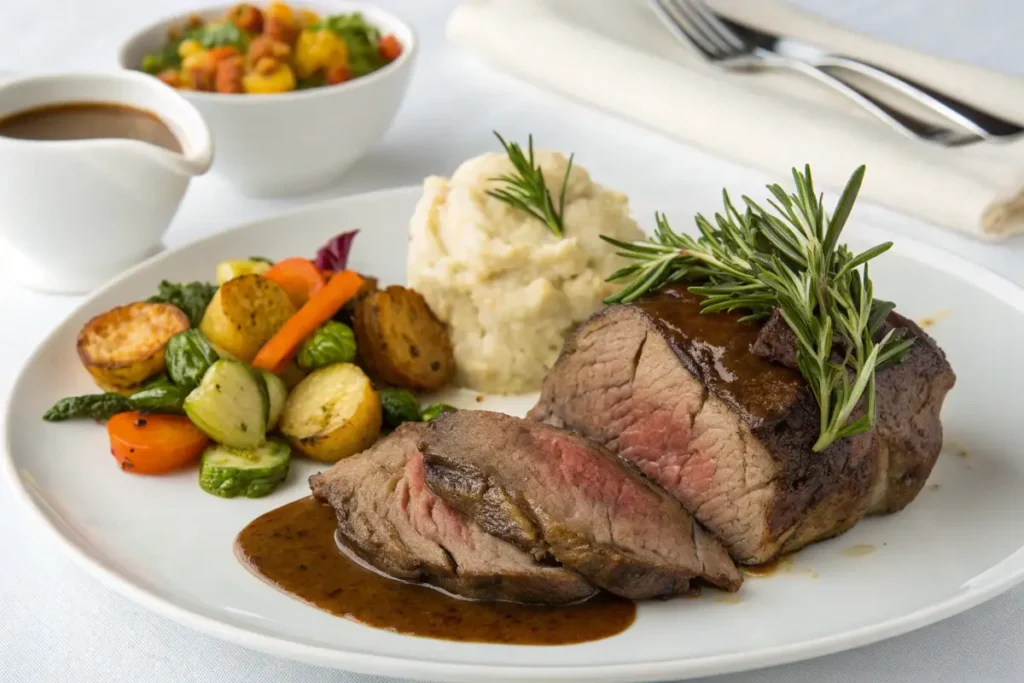
The Classic Comfort Meal
Nothing says “comfort food” like a plate of arm roast served with creamy mashed potatoes and buttery green beans. To enhance the flavors, drizzle a generous helping of pan gravy over the roast and potatoes. Additionally, a warm bread roll on the side completes this traditional, hearty meal that’s perfect for any occasion.
The Rustic Platter Presentation
For a show-stopping presentation, slice your arm roast into thick, juicy pieces and arrange them on a large serving platter. Surround the meat with roasted vegetables, such as golden-brown carrots, caramelized onions, and crispy potatoes. Meanwhile, add a few sprigs of fresh rosemary or thyme for a touch of elegance. This rustic yet beautiful setup is sure to wow your guests.
Leftover Sandwiches That Steal the Show
Transform yesterday’s arm roast into today’s star sandwich. First, shred the leftover meat and layer it onto crusty bread. Then, add melted cheese, caramelized onions, and a dollop of horseradish sauce for an extra punch. This quick and easy idea makes sure no part of your delicious roast goes to waste.
Creative Variations for Arm Roast Recipes
The beauty of an arm roast lies in its versatility. With a few tweaks, you can customize it to fit different cuisines, dietary needs, or personal preferences. Below are some exciting variations to inspire your next roast!
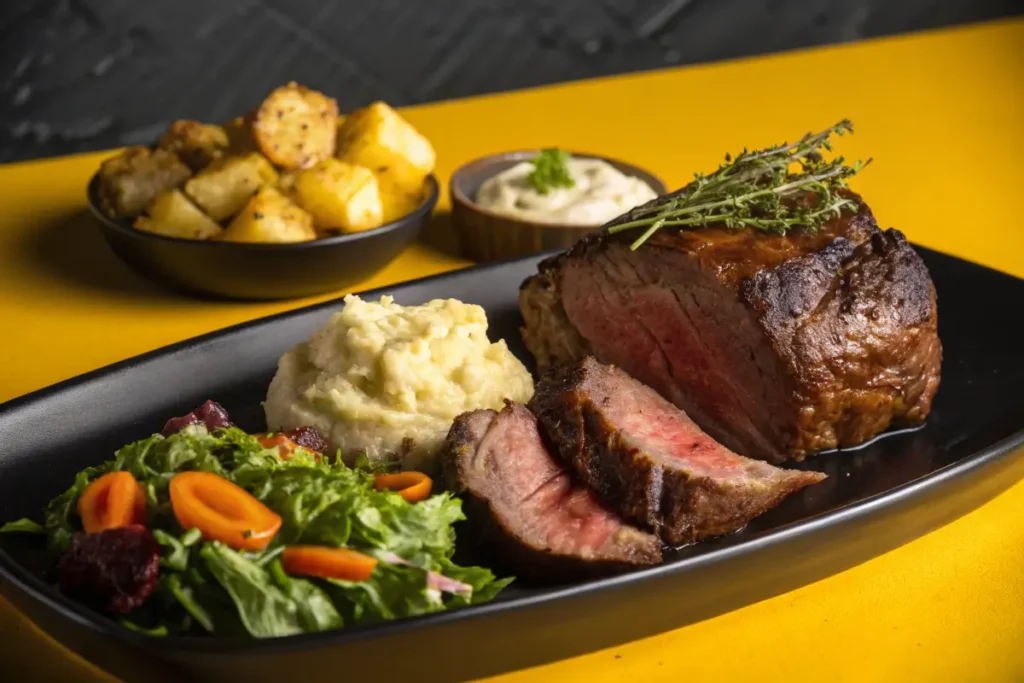
Low-Carb, Big Flavor
For a low-carb twist on your arm roast, swap out potatoes and carrots for roasted turnips, radishes, or cauliflower. Additionally, use a light, broth-based gravy instead of a thickened sauce. This option is perfect for those following keto or low-carb diets while still enjoying a hearty meal.
A Vegan-Friendly Alternative
Who says a roast has to be made with meat? Create a plant-based version by using jackfruit or seitan instead of beef. First, season the jackfruit with the same herbs and spices used for a traditional arm roast. Then, cook it with vegetables and broth for a flavorful and satisfying vegan dish that’s packed with comfort.
Turn Up the Heat with Spicy
If you’re a fan of bold flavors, a spicy arm roast is the way to go. Rub the beef with a mix of smoked paprika, cayenne pepper, and chili powder before searing it. Then, add sliced jalapeños to the broth for an extra kick of heat. This variation is perfect for spice lovers who want something exciting and different.
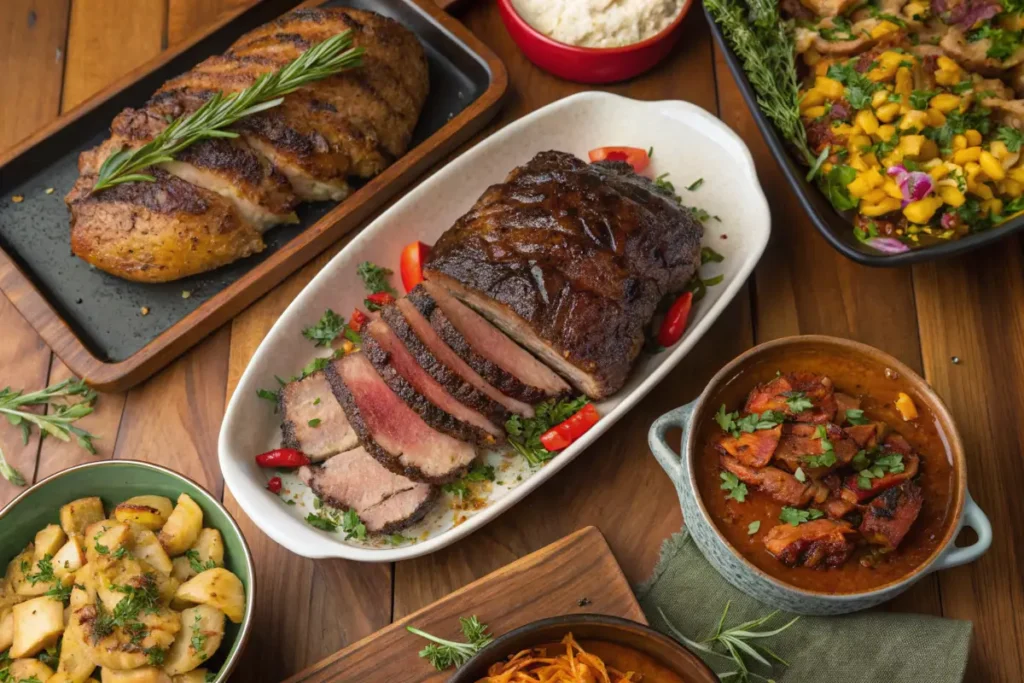
Quick Tips for Serving and Customizing
- Rest Before Slicing: Let your arm roast rest for 10-15 minutes after cooking. This step locks in the juices, making every bite moist and flavorful.
- Experiment with Herbs and Spices: From rosemary to cumin, the right seasonings can transform the dish and make it uniquely yours.
- Choose the Perfect Side Dishes: Pair rich, savory roasts with creamy sides like mashed potatoes, or balance them with lighter options like fresh salads.
- Use Quality Ingredients: The better your ingredients—especially the beef—the more incredible your arm roast will taste.
Nutritional Analysis of Arm Roast
An arm roast is not just delicious—it’s also packed with nutrients that make it a great choice for a hearty meal. Knowing the nutritional breakdown can help you make informed decisions about portion sizes, sides, and variations for your dish. Below, we’ll explore the key nutrients in a typical arm roast recipe while offering tips to make it healthier if needed.
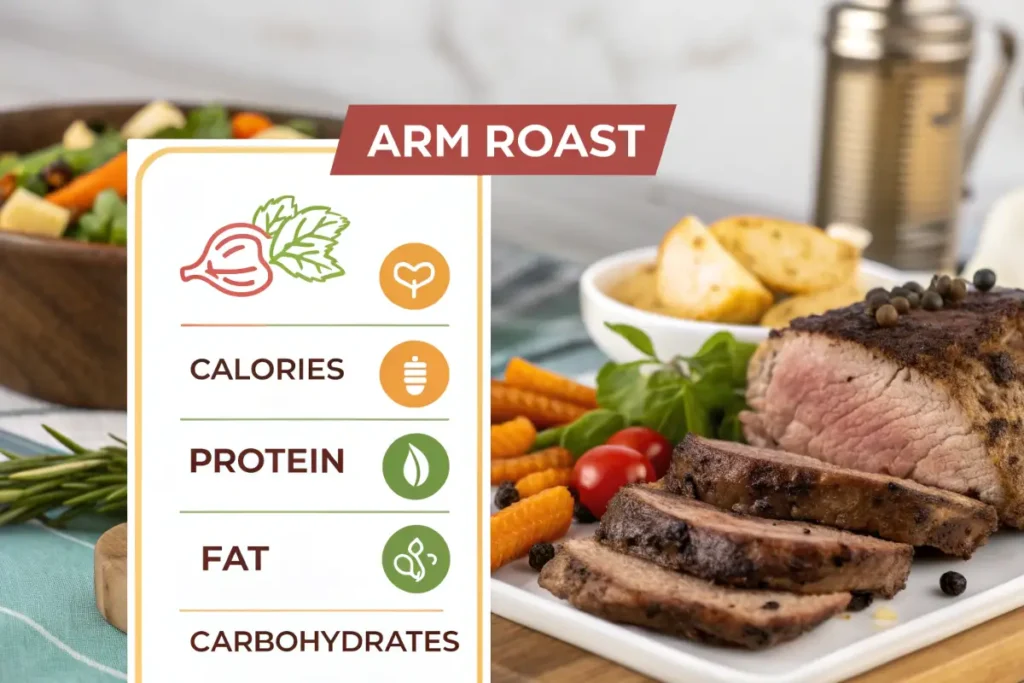
Nutritional Breakdown (Per 3 oz Cooked Arm Roast)
| Nutrient | Amount | % Daily Value * |
|---|---|---|
| Calories | 190 kcal | 10% |
| Protein | 23 g | 46% |
| Total Fat | 9 g | 14% |
| – Saturated Fat | 3.5 g | 18% |
| Cholesterol | 70 mg | 23% |
| Sodium | 65 mg | 3% |
| Potassium | 290 mg | 8% |
| Iron | 2.2 mg | 12% |
(*Percent Daily Values are based on a 2,000-calorie diet.)
Key Health Benefits of This cut of beef
- High in Protein: With 23 grams of protein per serving, an arm roast is excellent for muscle building and repair. Protein also helps you feel full longer, making it a great choice for a satisfying meal.
- Rich in Iron: Iron is essential for carrying oxygen throughout your body. A single serving of arm roast provides 12% of your daily iron needs, which is especially beneficial for those who may be prone to iron deficiency.
- Source of Potassium: Potassium helps regulate blood pressure and supports healthy muscle function. Pairing arm roast with potassium-rich sides like roasted sweet potatoes or spinach can further boost your intake.
- Low in Sodium: Compared to processed meats, arm roast is naturally low in sodium, making it a healthier option for those watching their salt intake.
Making Healthier
While arm roast is naturally nutritious, there are ways to make it even healthier without sacrificing flavor.
- Choose Leaner Cuts: Look for a leaner arm roast with less visible fat, or trim excess fat before cooking.
- Reduce Saturated Fat: Opt for broth-based gravies instead of cream-based sauces to lower the overall fat content.
- Add More Vegetables: Surround your arm roast with nutrient-dense vegetables like carrots, celery, turnips, and onions. These not only add flavor but also boost the dish’s fiber and vitamin content.
- Control Portion Sizes: A serving size of arm roast is typically 3-4 ounces. By sticking to this amount, you can enjoy the dish without overindulging.
- Use Heart-Healthy Oils: If you’re searing the roast, choose olive oil or avocado oil instead of butter to reduce saturated fat.
Dietary Considerations and Adjustments
- For Low-Sodium Diets: Use unsalted beef broth, and skip the Worcestershire sauce if it’s not labeled low-sodium. You can add flavor with garlic, fresh herbs, or a splash of lemon juice.
- For Gluten-Free Diets: Ensure all your ingredients, such as beef broth and any sauces, are certified gluten-free.
- For Weight Loss: Focus on leaner cuts, load up on roasted vegetables, and stick to a single portion of roast.
Final Thoughts on the Nutrition
is a delicious and wholesome option for meals that bring both flavor and nourishment to the table. Thanks to its high protein content and moderate calorie count, it’s an excellent choice for active individuals or families looking for a satisfying dish. By pairing it with healthy sides and mindful cooking techniques, you can create a meal that’s both indulgent and nutritious.
FAQs About Arm Roast and Related Cuts
Arm roast is great for slow cooking, braising, and pot roasts. It becomes tender and flavorful with low, slow cooking methods.
Yes, arm steak is affordable and flavorful. While it can be tough, it’s great for braising or slow cooking to enhance its tenderness.
Plan for 1/2 pound of uncooked arm roast per person. However, for hearty eaters or leftovers, increase to 3/4 pound per person.
Yes, arm roast can be shredded if slow-cooked properly. The connective tissues break down, making it perfect for tacos or sandwiches.
Yes, you can smoke an arm roast for rich flavor. Use low heat, a water pan, and cook it slowly to retain moisture and tenderness.
Arm roast isn’t ideal for steak-style cooking because it’s tough. However, it can be grilled or pan-seared if marinated and sliced thin.
The ribeye is considered the tastiest cut of steak. Its marbling adds incredible flavor, but every cut has unique qualities to enjoy.
Arm steak is also known as “Swiss steak” or “round bone steak.” These names come from its round bone and suitability for braising.
Yes, arm roast can be used for jerky. Slice it thinly, marinate it well, and dehydrate or smoke it for a flavorful snack.
Arm roast is moderately fatty, which adds flavor and tenderness. However, it has less fat compared to cuts like brisket or ribeye.
Conclusion of How to cook arm roast
This cut of beef is a true gem in the kitchen, offering versatility, flavor, and plenty of opportunities to experiment. Whether you prefer slow-cooking for melt-in-your-mouth results or oven-roasting for a crispy exterior, this dish always delivers. It pairs beautifully with a variety of sides, sauces, and seasonings, making it perfect for both everyday dinners and special occasions.
Additionally, this dish’s affordability and simplicity make it a favorite for both beginner cooks and experienced chefs. At the same time, its natural richness and tenderness allow it to stand out as a centerpiece for any meal. However, choosing the right cooking method and giving it time to rest after cooking are essential for the best results.
Ultimately, this is more than just a meal—it’s an invitation to gather around the table and enjoy something comforting, hearty, and unforgettable. So, take your favorite recipe, gather your ingredients, and start cooking something extraordinary today!
Print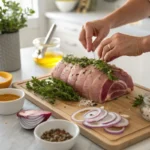
Arm Roast Recipes: 5 Ways to Cook
- Total Time: 70 minutes
- Yield: 6 servings 1x
- Diet: Gluten Free
Description
Discover five easy and delicious ways to cook a tender, flavorful roast. Perfect for family dinners or special occasions, these methods never fail!
Ingredients
- 3–4 lb arm roast (or similar cut of beef)
- 2 cups beef broth (low-sodium recommended)
- 1 large onion, sliced
- 3 large carrots, peeled and chopped
- 3–4 medium potatoes, quartered
- 4 garlic cloves, minced
- 1 tsp salt (or to taste)
- 1 tsp black pepper
- 1 tsp dried thyme
- 1 tsp dried rosemary
- 1 tbsp olive oil (for searing)
- Optional: 1/2 cup red wine or Worcestershire sauce
Instructions
- Prepare the Roast: Season the meat generously with salt, pepper, thyme, and rosemary. Let it rest for 20 minutes at room temperature.
- Sear the Meat: Heat olive oil in a skillet. Sear the roast on all sides until golden brown, about 2-3 minutes per side.
- Add the Vegetables: In your slow cooker or Dutch oven, layer the carrots, potatoes, onion, and garlic. Place the roast on top.
- Add Liquid: Pour in the beef broth, red wine, or Worcestershire sauce. Ensure the liquid covers at least half of the meat.
- Cook:
- Slow Cooker: Cook on low for 6-8 hours or until tender.
- Oven: Cover and roast at 300°F (150°C) for 3-4 hours.
- Pressure Cooker: Set on high pressure for 60-75 minutes, then allow natural release.
- Rest: Let the roast rest for 10-15 minutes before slicing to lock in the juices.
- Serve: Slice and serve with the vegetables and a side of gravy or sauce.
Notes
- Substitutions: Use turnips or parsnips instead of potatoes for a lower-carb option.
- Gravy Tip: Strain the cooking liquid and thicken with cornstarch for a delicious homemade gravy.
- Storage: Store leftovers in an airtight container in the fridge for up to 3 days.
- Prep Time: 15 minutes
- Cook Time: 55 minutes
- Category: Main Dish
- Method: Braise / Roast
- Cuisine: American
Nutrition
- Serving Size: 1/6 of the roast and vegetables
- Calories: 290
- Sugar: 2g
- Sodium: 250mg
- Fat: 12g
- Saturated Fat: 4g
- Unsaturated Fat: 8g
- Trans Fat: 0g
- Carbohydrates: 15g
- Fiber: 2g
- Protein: 25g
- Cholesterol: 75mg
Keywords: arm roast recipe, beef roast ideas, how to cook arm roast, slow cooker beef recipes, braised beef recipes, oven roasted arm roast

